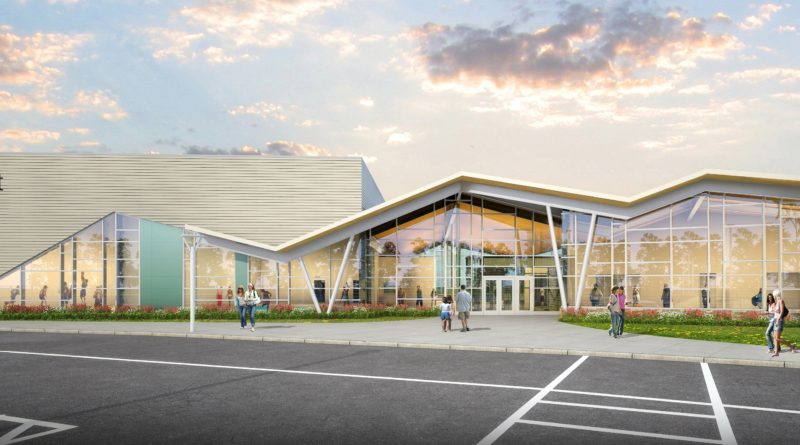How Biophilic Design Helps Bancroft’s Autistic Students
MOUNT LAUREL, N.J. — Connecting students to the natural world can prove therapeutic, especially to those with autism spectrum disorders (ASD). This is where biophilic design can make a positive impact on students’ experience and why it was the guiding philosophy behind the recently opened 80-acre, $75 million, New Jersey-based Raymond and Joanne Welsh Bancroft Mount Laurel campus.
The campus is among the first in the nation designed to accommodate the challenges of children with ASD. We spoke with New Jersey-based KSS Architects Partner Merilee Meacock, AIA, PP, LEED AP, about the landmark project and how biophilic design informed its genesis.
Q: What are the specific aspects of biophilic design that resonant with students on the autism spectrum?
Meacock: Visual connection to nature provides a positive impact on cognitive, psychological and physiological responses. It influences an individual’s mental health, performance and well-being. A wide range of health studies support that connection to nature has a profound impact on human fitness and quality of life. Exposure to nature can reduce stress, lower blood pressure, provide pain relief, improve illness recovery, accelerate healing, enhance staff morale and performance, and lead to fewer conflicts between individuals and caregivers.
The design of Bancroft’s Mount Laurel campus connects students, staff, and the community to nature through literal and figurative connections, visual connections to gardens and the outside landscape of the campus provides connection to circadian rhythms, peace and pleasure. The use of natural materials within the environment provide other sensory experiences, both calming and stimulating as needed for each student. Materials can affect student engagement, attitude, ability to relax, pay attention and aptitude for learning.
Access to the gardens and the pond provide complex sensory experiences, tapping into diverse fragrances, light, fluid sounds and variability in sensory patterns. As students explore the campus, a visual and form-based pattern language evoked in the use of biomorphic patterns — color coding, roof gable shapes — provides visual cues, allowing students to feel independent in a safe space and promoting emotional attachment to place.
Mental benefits of biophilic principles range from increased satisfaction and motivation to less stress and anxiety and improved problem-solving and creativity. Positive behavioral changes include improved coping and mastery skills, enhanced attention and concentration, lower hostility and aggression, and improved social interaction.
Q: What are the considerations in designing for this population versus neurotypical students?
Meacock: Individuals with special needs often have increased sensitivity to various ranges of light, sound and motion.
Often, individuals on the spectrum contribute to elevated levels of sound and movement in a space. There is a diversity in gross and fine motor skills and a wide range of the level of individuals’ understanding of social cues and context. Individuals may also experience a greater range of preferred communication methods that depend more on all five senses.
Although there are commonalities amongst individuals with ASD, each individual experiences different triggers and learning requirements. Adapting spaces and maintaining their flexibility, as well as providing clear and multi-sensory wayfinding and orientation cues, become of heightened importance.
Q: How does biophilic design address issues symptomatic of students on the spectrum — from light to noise and other environmental factors that can be stressors?
Meacock: The use of windows on the Bancroft project as well as the building configuration and consideration of diffuse and direct light balance daily and seasonal light cycles. Understanding that these cycles are part of setting a circadian rhythm that contributes to well-being is key to the design’s manifestation of light throughout the campus. Bancroft’s use of shades and window coatings further engages the users in providing choice — what pattern of light is right for me at what time. This is paralleled in the temperature controls and choices that users can engage in, promoting a sense of independence and customization.
Risk and peril is a biophilic pattern that offers users a sense of exhilaration through the intrigue and exhilaration of an implied threat, such as height. Elements such as interior and exterior playgrounds with climbing opportunities that allow students to concentrate on challenges, achieve success and confidently grow in their achievements are safe examples of risk and peril in action.
A space that incorporates mystery promotes anticipation and expectation. For Bancroft, we design school corridors that weave and build, creating an experience that allows for glimpses of what’s ahead, but requires exploration and curiosity to explore around corners. Similarly, the golden walk that serves as Bancroft’s entry sequence involves a sensory trail, water feature, views to athletics fields, music, art and retail areas, the sensory experience of the dining hall, all combining for a multi-sensory experience that builds on variability and discovery.
Balancing prospect and refuge can have the effect of creating free and open spaces while simultaneously offering individuals safety and comfort in grounded objects that promote rest and protectiveness. The design of Bancroft applies vast views to the acreage of campus — from the main lobby, one can engage with a vista of deer running through the field, the moon or sun rising, wildlife or people enjoying the quad. This sense of connection within a safe space offers individuals a sense of security and confidence.
Within the school areas, the design took a unique approach — providing small sensory rooms that offer students protective places to retreat to when overstimulated. Similarly, the housing design is configured with three distinct group spaces for families to gather for weekends or special occasions.

